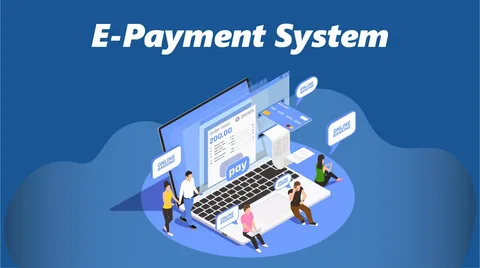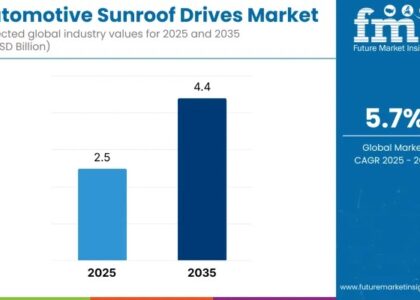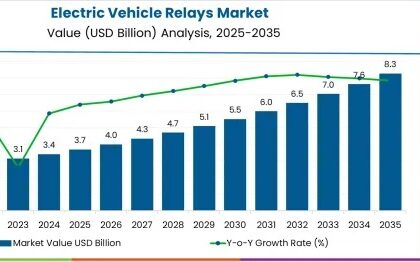The ePayment system market is projected to reach USD 138.8 billion in 2025 and expand to USD 816.8 billion by 2035, driven by a compound annual growth rate (CAGR) of 20.1%. This rapid expansion is fueled by advancements in mobile technology, the proliferation of e-commerce platforms, and the increasing shift toward cashless and contactless transactions across developed and emerging economies.
In a global economy that is increasingly mobile, digital, and data-driven, ePayment systems have emerged as the backbone of modern commerce. From contactless cards and QR codes to digital wallets and blockchain-enabled platforms, the ePayment system market is reshaping how consumers, businesses, and governments handle financial transactions—streamlining payments with speed, security, and convenience.
As financial ecosystems evolve in both advanced and emerging markets, ePayment systems are not just facilitating transactions—they are redefining trust, accessibility, and the future of financial inclusion.
Get Ahead with Our Report: Request Your Sample Now!
https://www.futuremarketinsights.com/reports/sample/rep-gb-5813
Beyond Plastic: The Shift to Frictionless Payments
While traditional credit and debit cards laid the foundation for electronic payments, the market has rapidly transitioned toward frictionless and omnichannel experiences. Today, users expect to pay with a single tap, scan, or biometric authentication across in-store, online, and mobile platforms.
Digital wallets, app-based payment systems, and peer-to-peer (P2P) platforms now enable instant money transfers, bill payments, subscriptions, and even cross-border transactions—without the need for physical infrastructure or cash handling.
Key Technologies Driving ePayment Innovation
The rise of ePayment systems is powered by a convergence of technologies that enhance speed, security, and scalability. These include:
-
Near Field Communication (NFC): Supporting contactless payments through smartphones and smartwatches.
-
QR Code Payments: Enabling easy and cost-effective transactions in retail, dining, and transportation.
-
Biometric Authentication: Using fingerprint, facial recognition, and voice ID to secure transactions and reduce fraud.
-
Tokenization and Encryption: Protecting sensitive user data and ensuring compliance with global security standards.
-
Blockchain and Distributed Ledger Technologies: Introducing decentralized payment frameworks and supporting the rise of digital currencies.
These technologies are enabling new business models, from embedded finance in e-commerce platforms to real-time disbursements in gig economy apps.
Financial Inclusion and Global Reach
One of the most powerful impacts of ePayment systems is their ability to bring financial services to underserved populations. In regions where traditional banking is limited, mobile payments have become a gateway to financial inclusion—allowing individuals to save, borrow, and transact without needing a physical bank account.
Governments and NGOs are increasingly leveraging ePayment platforms for direct benefit transfers, emergency aid, and agricultural subsidies, promoting transparency and efficiency in social programs.
B2B and Enterprise Payment Evolution
While consumer payments garner much of the spotlight, ePayment systems are revolutionizing B2B transactions as well. Businesses are moving away from paper checks and manual processes toward digital invoicing, automated reconciliation, and integrated payment gateways.
Corporate ePayment platforms now support multi-currency settlements, supply chain financing, and API-based connectivity with ERP and accounting systems—accelerating cash flow and improving financial visibility.
Security, Regulation, and Consumer Trust
With the increase in digital transactions comes a heightened focus on cybersecurity and compliance. ePayment providers must navigate complex regulatory landscapes involving data privacy laws, anti-money laundering (AML) directives, and know-your-customer (KYC) requirements.
At the same time, building and maintaining consumer trust is paramount. Multi-layered authentication, fraud detection algorithms, and transparent dispute resolution systems are key to ensuring that digital transactions remain secure and user-friendly.
Exhaustive Market Report: A Complete Study
https://www.futuremarketinsights.com/reports/epayment-system-market
Integration with Emerging Commerce Models
As digital commerce evolves, ePayment systems are seamlessly integrating with trends such as:
-
Subscription-based services
-
Buy Now, Pay Later (BNPL)
-
Cryptocurrency payment options
-
Voice commerce and IoT-enabled payments
These innovations allow businesses to offer personalized and flexible payment options, boosting customer retention and expanding revenue streams.
Challenges in Infrastructure and Interoperability
Despite rapid growth, the ePayment ecosystem faces ongoing challenges. Inconsistent internet connectivity, device compatibility issues, and lack of interoperability between platforms can hinder adoption in certain regions.
Additionally, small merchants and rural communities may lack the digital infrastructure or technical know-how to integrate ePayment solutions effectively. Addressing these gaps is essential to ensuring equitable access and sustainable market expansion.
The Road Ahead: Toward a Cashless and Intelligent Future
Looking forward, the ePayment system market is heading toward a future defined by real-time, borderless, and intelligent payments. Open banking frameworks, AI-driven fraud prevention, and embedded finance will further blur the lines between commerce, banking, and technology.
Digital identity verification, tokenized wallets, and programmable payments powered by smart contracts are set to create more secure and autonomous payment flows—paving the way for innovations in decentralized finance (DeFi) and central bank digital currencies (CBDCs).
A Foundation for the Digital Economy
At its core, the ePayment system market is enabling the digital economy to thrive—facilitating not just transactions, but transformation. Whether it’s a customer checking out with a smartphone, a business processing payroll across borders, or a government delivering aid to citizens, digital payments are making it faster, safer, and smarter to move money.
As innovation accelerates and user expectations evolve, ePayment systems will continue to serve as the foundation of global commerce—connecting people, platforms, and possibilities in real time.





